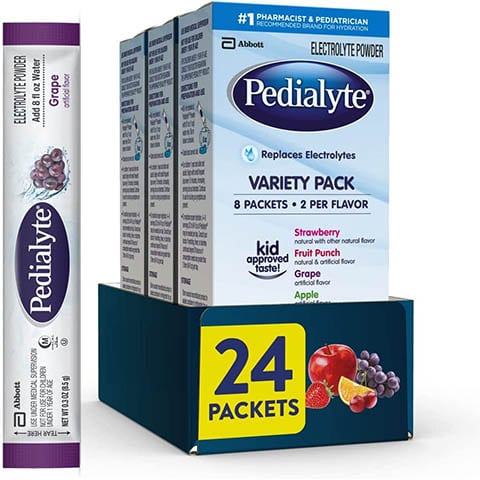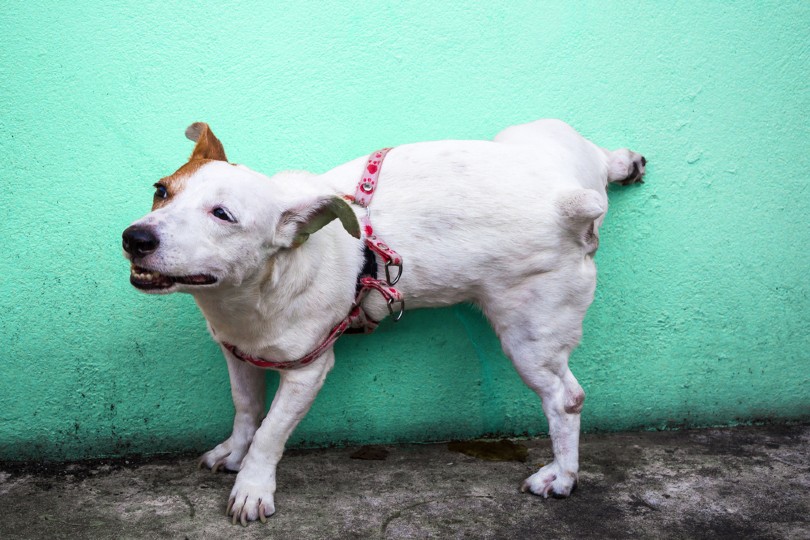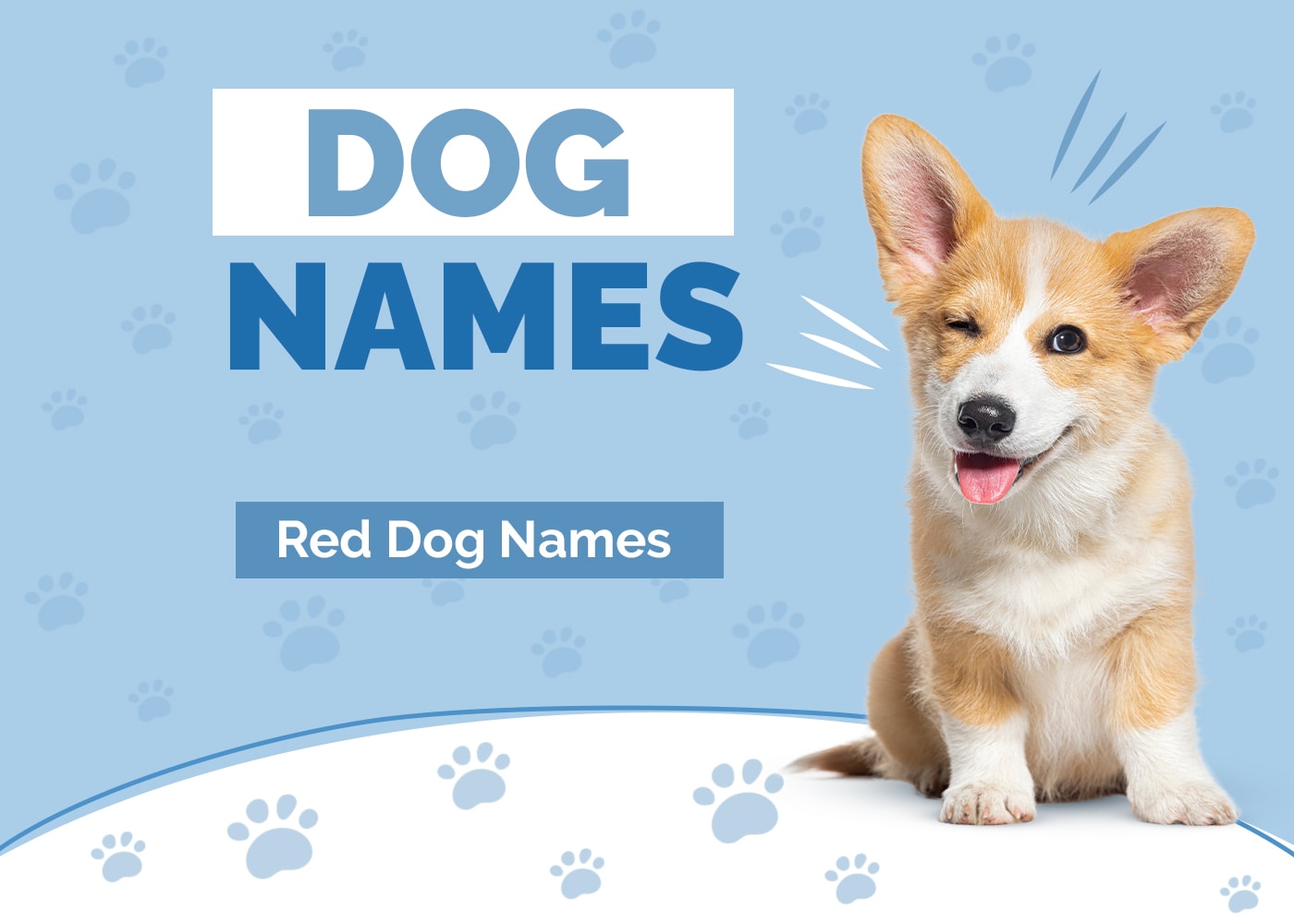Can Dogs Drink Pedialyte? Uses, Facts & Safety Guide

Updated on
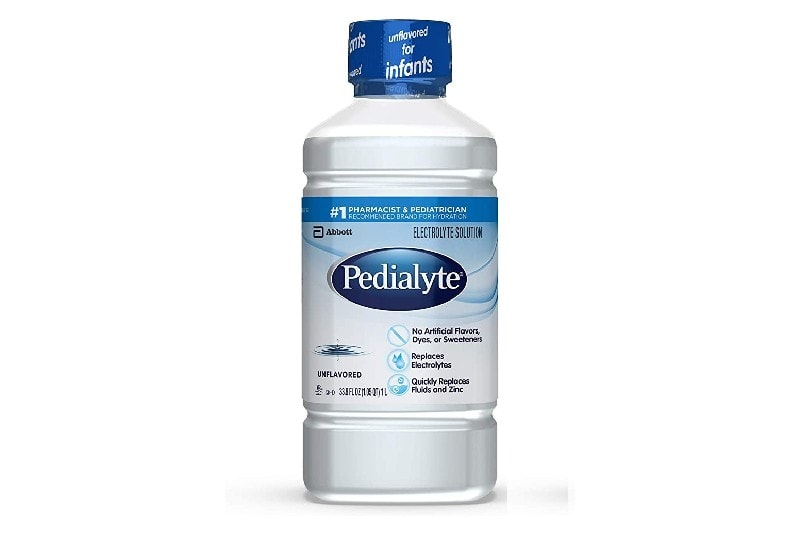
Originally designed to help combat dehydration in children, Pedialyte is an oral electrolyte solution. It consists of water, dextrose, sodium, potassium, chloride, and other ingredients that are missing from the body when it is dehydrated.
The unflavored variety of this drink is safe to give to your dogs, as well as your kids, but you should remain cautious of sweeteners and flavorings. Unflavored Pedialyte can be used in the same way as it is on humans: to help replace minerals in the body after dehydration. The only time it shouldn’t be given is when your dog is vomiting and cannot keep any food or drink down. It can be given to your dog every hour, but it should not be used to completely replace the water in your dog’s diet.
What Is Pedialyte?
Pedialyte is an oral electrolyte solution. It is most commonly used to replace the electrolytes that are lost during dehydration. It is given to children but is also taken by adults, and as well as being used to treat dehydration caused by illness, sports players use it to help replenish essential minerals after particularly grueling workout sessions.
It primarily consists of water but also contains a host of minerals including potassium and sodium, both of which are as important to your dog as they are to you.
Pedialyte comes in two main forms: a powder that is mixed with water before consumption, and a bottled drink that has already been mixed. Although flavored alternatives are available, the best option, especially for dogs, is to give the plain variety. Your dog could be allergic to some of the flavorings and other ingredients in the flavored versions.
Dehydration In Dogs
Dehydration is a loss of fluids and other minerals from the body. This happens when the body loses more fluids than it consumes. It can cause symptoms that vary in severity, but ultimately it can prove fatal.
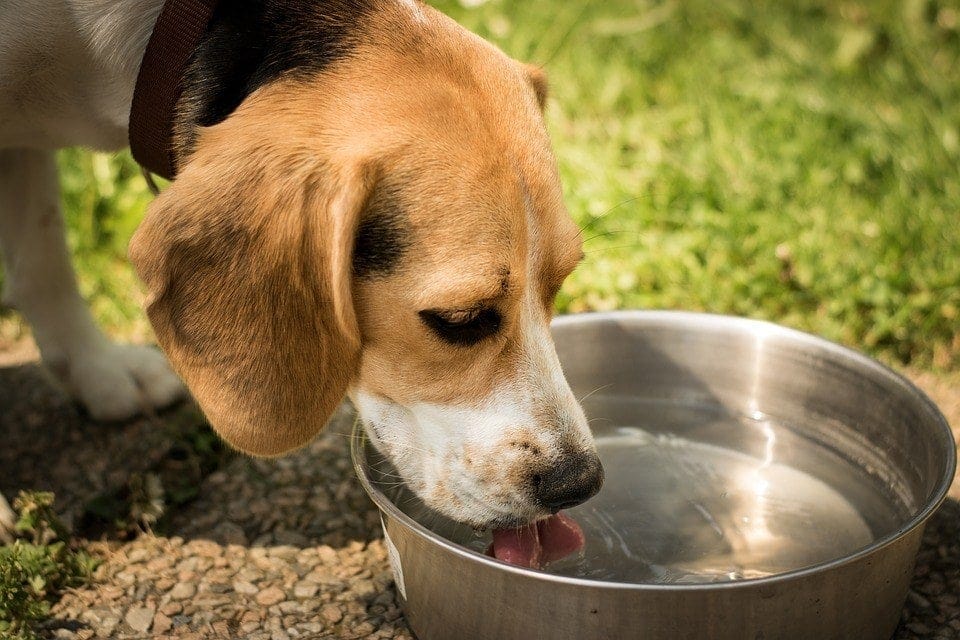
Causes
Dehydration can be caused by giving your dog too much exercise, without offering him water or other replacement fluids. Other possible causes include:
- Lack of fluid consumption
- Vomiting
- Diarrhea
- Excessive urination
Symptoms
The symptoms of dehydration vary according to its severity. Mild dehydration is usually accompanied by listlessness and a lack of energy, increased panting, dry mouth and nose, and possibly even signs of depression.
Symptoms of severe dehydration are more serious and can include extreme weakness, to the extent that your dog can barely lift themselves up.
Cures
The first cure you should try to remedy dehydration is water. Ensure that your dog has a bowl of fresh water available to them. They should always be able to access fresh water, and if they can drink a moderate amount of water, their body should start the recovery process so that they become fully rehydrated and essential minerals are replaced in their body. If dehydration becomes serious, it may be necessary for your veterinarian to put them on a drip. This effectively forces water into the body, but it does so while preventing further vomiting and diarrhea that might otherwise rid the body of fluids. This is usually considered a last resort after other methods of rehydration have proven ineffective.
Is Pedialyte Safe For Dogs? Can Puppies Have Pedialyte?
If your dog is suffering mild or moderate symptoms of dehydration and you can’t get them to keep any water down, or their body needs more than just water, Pedialyte is a safe and potentially effective solution. Mix the Pedialyte powder according to the instructions on the packet, or give your dog Pedialyte liquid from the bottle.
How Much To Give
For a dog weighing around 50 pounds, you should give approximately half a cup of Pedialyte. This can be given once an hour, and you should alter the amount given according to the weight of your dog.
If you do not see any signs of improvement after a day or so, seek veterinarian help. Dehydration is a serious problem that can have disastrous consequences for your dog.
Alternatives To Pedialyte
Pedialyte should not be given if your dog is vomiting. He will likely reject the drink and it can cause further vomiting, adding to his distress and exacerbating the symptoms.
The most obvious alternative to this electrolyte solution is water. Healthy dogs do not require any liquid apart from water to stay hydrated. This should be given freely, and you should ensure that it is fresh water.
It should not be allowed to sit for too long. If you find that you are throwing water away because it has been sitting for too long, this may be an indication that the bowl is too large, that your dog is not drinking enough water, or that he is getting water from another, potentially unclean and unsafe source.
Intravenous solutions are considered an alternative, but your vet will advise if these are necessary and are usually only used as a final resort if your dog will not take liquids in any other way.
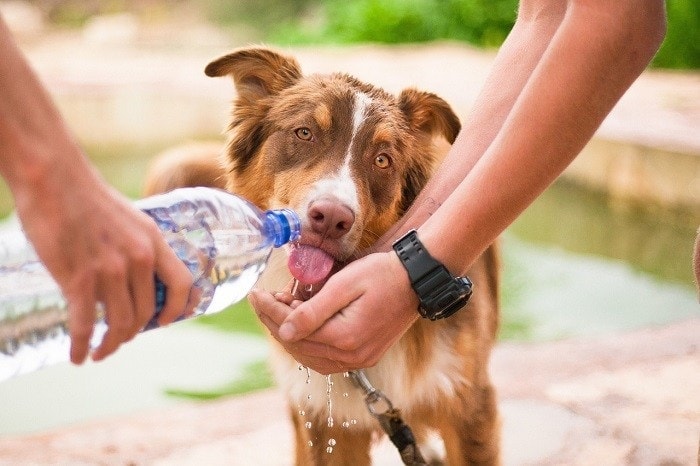
Can Dogs Have Pedialyte?
Pedialyte is safe for canine consumption, although it should not be considered a full-time alternative to fresh water. It can be given every hour while your dog is dehydrated, but if your dog is still showing symptoms after about 24 hours, seek professional help. Dehydration can kill, and you need to get it treated as quickly as possible to prevent long-term detrimental effects.
Related Reads:

